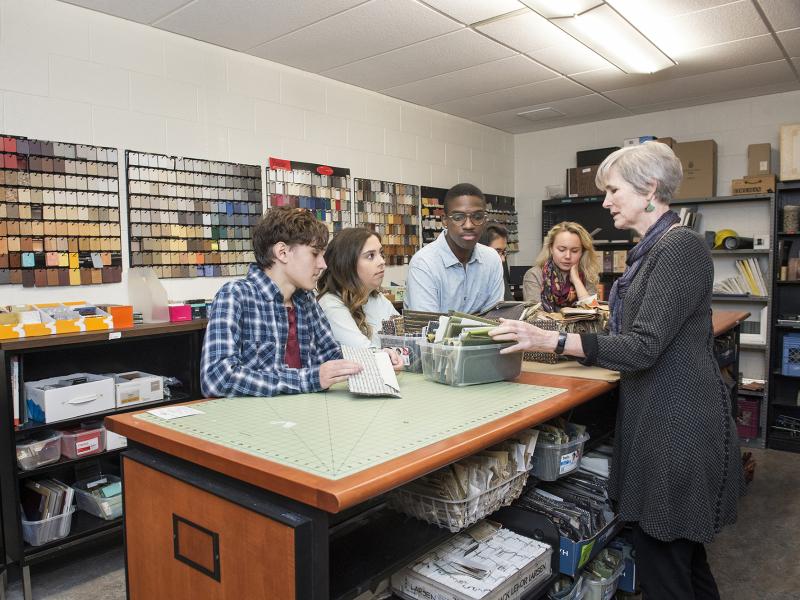-
Program Duration: 2 Years
-
Degree Type: Associate in Arts (A.A.)
-
Total Credit Hours: 64

About This Program
In the Interior Design program, you will learn how to plan a building layout; choose style and color palettes; select furniture, floor and window coverings; and determine lighting schemes for interior spaces. You will explore traditional and contemporary design styles; guidelines for using lighting and color; freehand, digital, technical and presentation drawing; design of space, color, texture; techniques for implementing clients’ wishes; legal and ethical considerations; and methods for communicating your ideas to clients and colleagues. The core courses you take together with Construction Management, Computer-Assisted Design, Facility Management and Architecture students will help you relate skills and specializations from various fields. Our experienced, supportive faculty will work with you to assemble a portfolio or website that showcases your abilities.
This program leads to the Associate in Arts degree in Interior Design, with graduates prepared to transfer to baccalaureate institutions. However, after graduation from the Community College of Philadelphia, students may choose to enter the work force as junior or assistant designers, or as materials librarians.
Transfer Opportunities

Launch Your Career in Interior Design
- Furniture Finisher – est. salary $41,653
- Interior Designer – est. salary $72,037*
- Set and Exhibit Designer $69,829
Career Outlook
Median Salary of an Interior Designer
Number of Jobs in the Region
10-year Job Outlook in the Region for First-Line Supervisors of Interior Designers
Interior Designer
Plan, design, and furnish interiors of residential, commercial, or industrial buildings. Formulate design which is practical, aesthetic, and conducive to intended purposes, such as raising productivity, selling merchandise, or improving life style. Maynts of mechanics, installers and repairers.
Starting Pay: $39,023

Typical Tasks
- Confer with client to determine factors affecting planning interior environments, such as budget, architectural preferences, and purpose and function.
- Advise client on interior design factors such as space planning, layout and use of furnishings or equipment, and color coordination.
- Coordinate with other professionals, such as contractors, architects, engineers, and plumbers, to ensure job success.
- Review and detail shop drawings for construction plans.
- Estimate material requirements and costs, and present design to client for approval.
Related Programs
Let's Get Started



